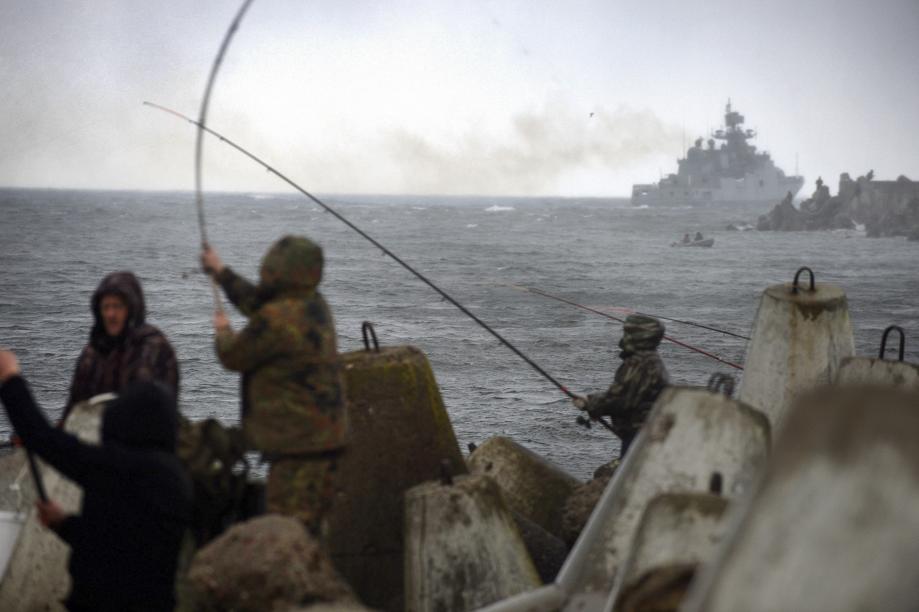
KALININGRAD, Russia — The maritime museum in this Russian exclave on the Baltic Sea caps each summer with its international Water Assembly, an antic parade of small historical vessels from around the Baltics, their crews wearing period costumes as they sail the Pregolya River.
But this year, said Svetlana G. Sivkova, the founding director of Kaliningrad’s Museum of the World Ocean, regular participants from neighboring Lithuania and Poland threatened to stay home.
“They said they could not come to us because Poles and Lithuanians are being beaten on the streets of Kaliningrad,’’ said Sivkova, appalled at what she called an abrupt and unwarranted change in mood.
“These are intelligent, educated people,’’ she added. “It’s horrible propaganda. We had to explain that it’s not true, that we are an open people.’’
Kaliningrad — the city and surrounding province share the name — was once the heart of East Prussia and a German redoubt for 500 years before the Red Army captured it from the Third Reich in 1945. In the first 25 years after the collapse of the Soviet Union, Moscow worked hard to bury Kaliningrad’s reputation as an armed garrison closed to foreigners.
These days, the Kremlin seems determined to do the opposite, and senior Western military officials and other experts now regard the Baltic region as a main fault line in revived East-West tensions.
One of the most confrontational incidents in years took place Tuesday about 70 nautical miles off Kaliningrad, where two Russian Su-24 planes buzzed the US guided missile destroyer Donald Cook, simulating an attack. One plane roared within 30 feet of the ship, Pentagon officials said.
In the immediate post-Soviet era, Moscow tried to reinvent Kaliningrad, which is more than 200 miles from mainland Russia, as its own duty-free Hong Kong. Factories producing cars, electronics, and furniture blossomed. After the provincial government negotiated visa-less travel to Polish border areas, the Ikea outlet in nearby Gdansk became a Russian colony.
“More people visited Europe than big Russia,’’ said Ilya Shumanov, the local representative of Transparency International, an anti-corruption organization based in Berlin.
In recent years, however, Moscow has heavily armed Kaliningrad, analysts say, equipping secretive bases with the advanced, long-range S-400 anti-aircraft missile system and mobile, medium-range Bastion anti-ship missiles. Russia has also held maneuvers here deploying Iskanders, a short-range ballistic missile capable of carrying nuclear warheads.
During congressional testimony in February, General Philip M. Breedlove, the NATO commander, described Kaliningrad as a “very militarized piece of property’’ and a “complete bubble’’ capable of repelling attacks by air, land, or sea.
With recent Russian military adventures in Crimea, eastern Ukraine, and Syria, President Vladimir Putin has left the world guessing when or where he might intervene next.
Given his stated policy of safeguarding ethnic Russians who were severed from the motherland after the Soviet Union disintegrated, some fear the next target might be the Baltic States: Estonia, Latvia, and Lithuania. All three former Soviet republics are members of the European Union and NATO.
An attack on them would trigger NATO’s mutual defense treaty. Any attempt to defend them would have to get past Kaliningrad, wedged between Poland and Lithuania.
In the few conflicts where NATO has intervened, it has always displayed overwhelming force, experts said, but Kaliningrad would be different.
“The overall balance is very hostile to NATO,’’ said David A. Shlapak, lead author of a new RAND Corp. study on the Baltics.
Russians here tend to agree, although they mainly scoff at the idea of such a war. Yet people here find being cast as a Russian fortress disorienting.
“It is a strange question, because we look at ourselves as being a bridge, not a fault line,’’ said Eugene Makarkhin, 26, a computer engineer.



